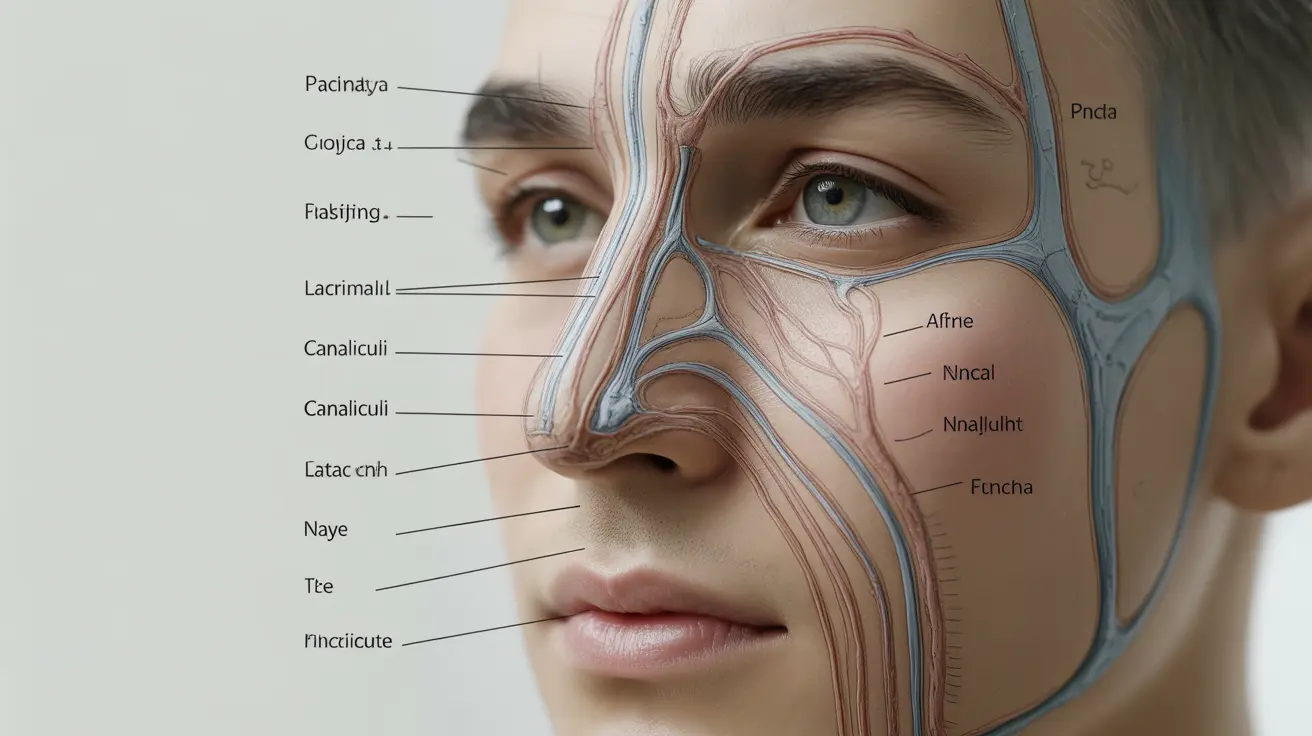If you've ever experienced mucus or "snot" coming from your eyes while blowing your nose, you're not alone. This unusual but common occurrence is directly related to the intricate connection between your eyes, nose, and tear drainage system. Understanding this phenomenon can help you recognize when it's normal and when it might indicate an underlying issue that needs attention.
The connection between your eyes and nose occurs through a complex drainage system called the nasolacrimal system. This network of ducts and passages helps drain tears and other eye secretions into your nasal cavity. When this system is affected, you might notice unusual symptoms like mucus appearing in your eyes during nose-blowing.
The Eye-Nose Connection Explained
Your eyes are constantly producing tears to keep them lubricated and healthy. These tears normally drain through tiny openings in your eyelids called puncta, which connect to the nasolacrimal duct system. This system creates a direct pathway from your eyes to your nose, which is why you might taste salty tears in the back of your throat when crying.
When you blow your nose forcefully, the increased pressure in your nasal passages can sometimes cause mucus to travel backward through these ducts, resulting in the appearance of "snot" in your eyes. This reverse flow typically occurs when there's excessive pressure or partial blockage in the system.
Common Causes of Nasolacrimal System Issues
Anatomical Factors
Some people naturally have narrower tear ducts or slight anatomical variations that make them more prone to experiencing this phenomenon. These structural differences can affect how easily fluids flow through the drainage system.
Inflammation and Infection
Infections, allergies, or general inflammation can cause swelling in the nasolacrimal system, leading to partial blockages and unusual drainage patterns. This can increase the likelihood of experiencing reverse flow when blowing your nose.
When to Seek Medical Attention
While occasional mucus in your eyes during nose-blowing might be normal, certain symptoms warrant medical evaluation:
- Persistent eye discharge or tearing
- Recurring eye infections
- Pain or pressure around the eyes
- Blurred vision
- Chronic nasal congestion
Prevention and Management Strategies
Several approaches can help manage and prevent issues with your tear drainage system:
- Gentle nose-blowing technique
- Regular eye hygiene
- Avoiding excessive force when blowing your nose
- Using appropriate allergy medications when needed
- Maintaining good overall sinus health
Frequently Asked Questions
Why does snot sometimes come out of my eyes when I blow my nose?
This occurs because of the connected drainage system between your eyes and nose. When you blow your nose forcefully, the pressure can cause mucus to flow backward through the tear ducts, appearing as "snot" in your eyes.
What causes blocked tear ducts and how are they related to mucus discharge from the eyes?
Blocked tear ducts can be caused by inflammation, infection, anatomical issues, or injury. These blockages can affect normal tear drainage and lead to unusual mucus discharge, especially when pressure is applied during nose-blowing.
How can blocked tear ducts be diagnosed when nasal mucus appears in the eyes?
Healthcare providers can diagnose blocked tear ducts through physical examination, dye testing to track tear drainage, and sometimes imaging studies to visualize the drainage system's structure.
What treatment options are available for blocked tear ducts that cause mucus to come out of the eyes?
Treatment options range from conservative approaches like warm compresses and massage to medical interventions such as antibiotics for infections. In some cases, surgical procedures may be necessary to clear or repair blocked ducts.
Can massaging the tear duct area help prevent or relieve snot coming out of the eyes when blowing the nose?
Gentle massage of the tear duct area can help maintain proper drainage and may provide some relief. However, it's important to use proper technique and avoid excessive pressure, which could worsen the condition.




